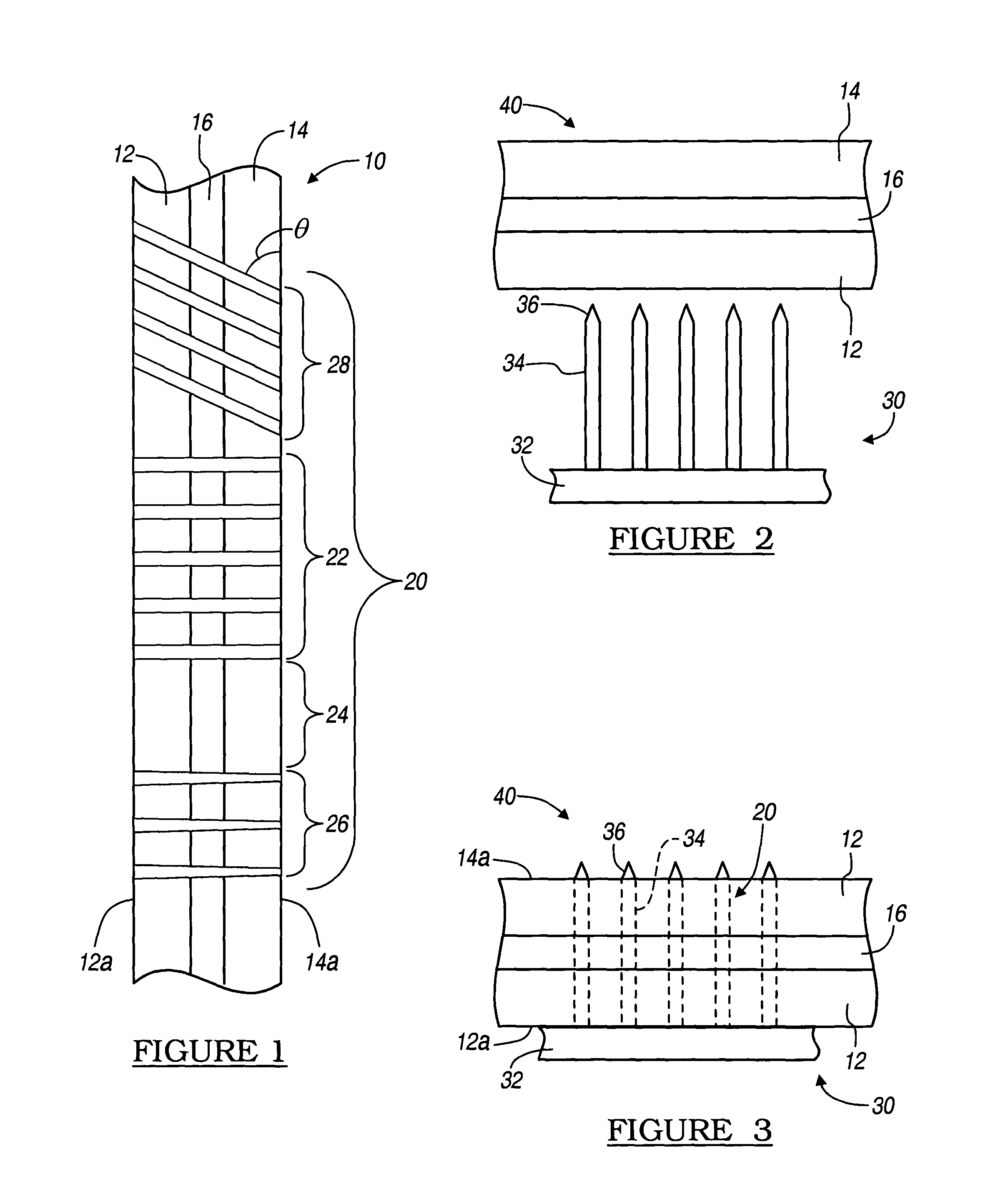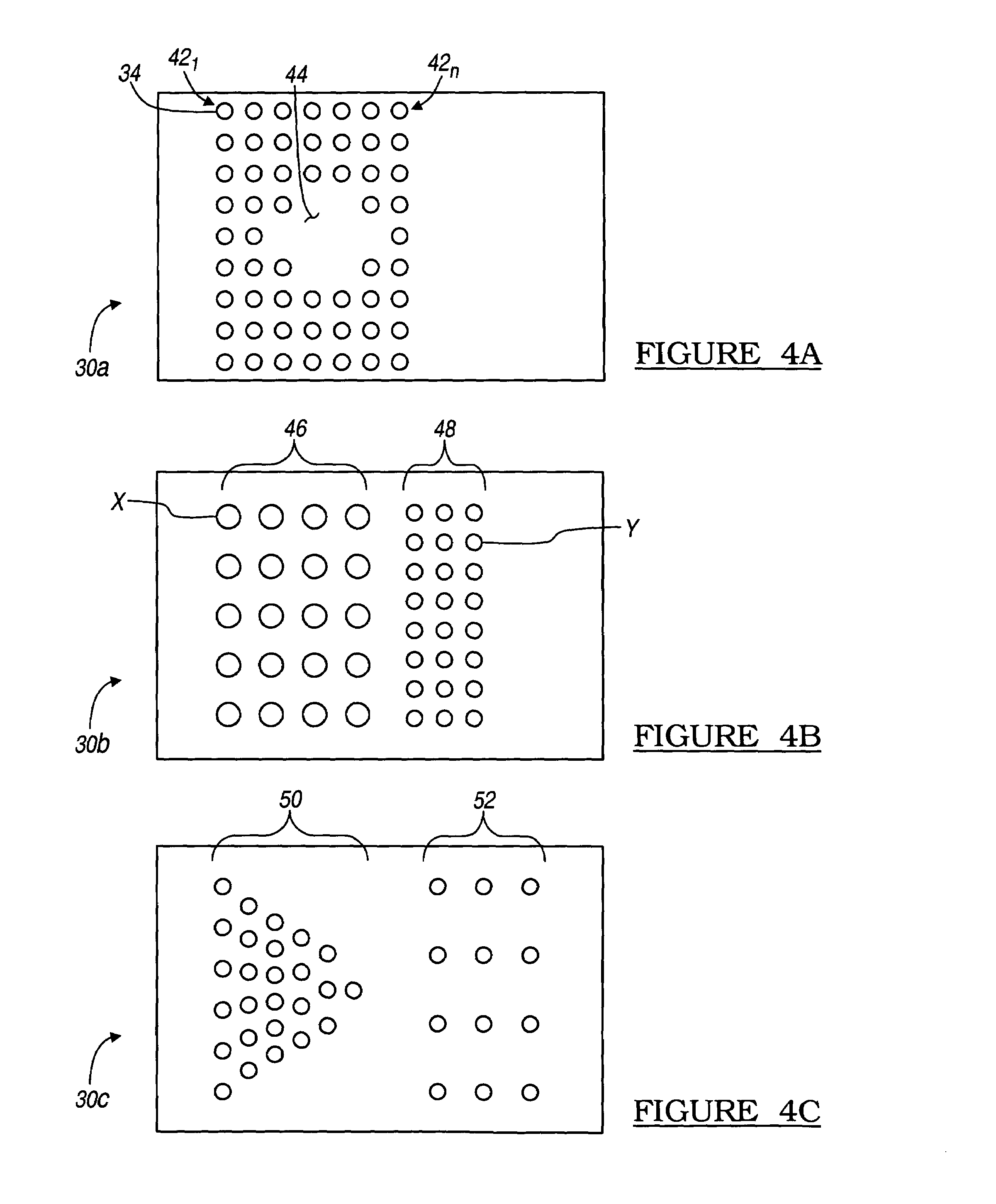Transpiration cooling system
a cooling system and transpiration technology, applied in the direction of non-positive displacement fluid engines, liquid fuel engine components, safety/emergency devices, etc., can solve the problems of difficult cooling of transpiration cooling systems in particularly harsh environments, uneven distribution of porosity in materials, and inability to select other selected or desirable characteristics
- Summary
- Abstract
- Description
- Claims
- Application Information
AI Technical Summary
Benefits of technology
Problems solved by technology
Method used
Image
Examples
Embodiment Construction
[0020]The following description of various embodiments is merely exemplary in nature and is in no way intended to limit the invention, its application, or uses.
[0021]With reference to FIG. 1, a laminated structure 10 includes at least two layers, a first layer 12 and a second layer 14 formed generally adjacent one another. In addition, an intermediate layer 16 may be formed or positioned between the first and second layers 12, 14. The intermediate layer 16 may be used for adhering the first and second layers 12, 14 to one another during a formation or laminating process. Nevertheless, it will be understood that laminated layers may include a pre-impregnated material which can be used to affix the first and second layers 12, 14 together during the formation process. Alternatively, the first and second layers 12, 14 may be fixed to one another, during the formation process, without any additional adhesive material. Also, it will be understood that the laminate structure 10 may include...
PUM
 Login to View More
Login to View More Abstract
Description
Claims
Application Information
 Login to View More
Login to View More - R&D
- Intellectual Property
- Life Sciences
- Materials
- Tech Scout
- Unparalleled Data Quality
- Higher Quality Content
- 60% Fewer Hallucinations
Browse by: Latest US Patents, China's latest patents, Technical Efficacy Thesaurus, Application Domain, Technology Topic, Popular Technical Reports.
© 2025 PatSnap. All rights reserved.Legal|Privacy policy|Modern Slavery Act Transparency Statement|Sitemap|About US| Contact US: help@patsnap.com



